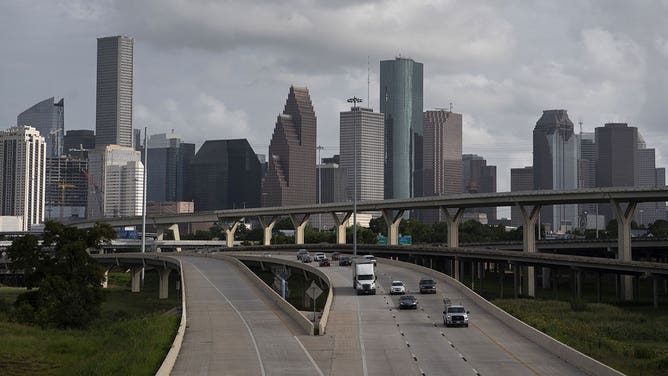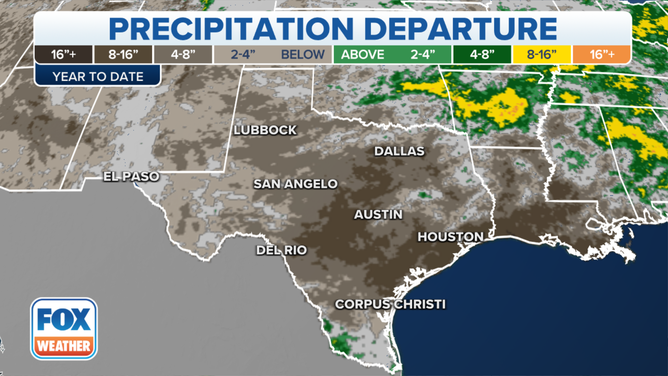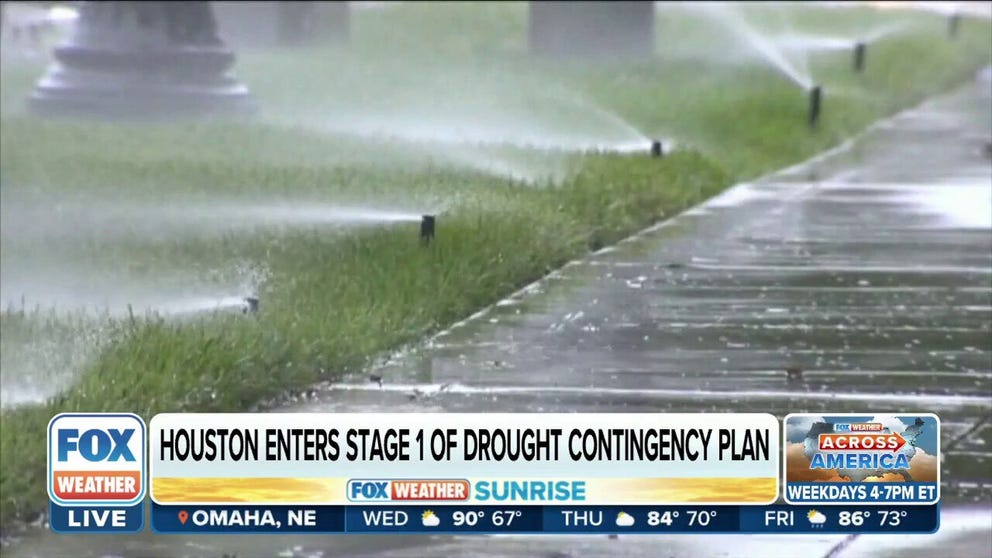Houston, we have a problem: Nation's 4th largest city asks residents to cut back on water usage
Several Texas cities have activated their plans aimed at water conservation as hot, dry weather expands in the state
Houston enters stage 1 of drought contingency plan
High temperatures and limited rainfall is forcing Houston to conserve water.
HOUSTON – The fourth-largest city in the nation, and one of the largest cities in Texas, has activated a plan aimed at curtailing water usage amid an expanding drought in the state.
Houston Public Works announced Tuesday that the first stage of the city’s drought contingency plan is being implemented. This means that customers are being asked to voluntarily limit their outdoor watering to twice a week between the hours of 7 p.m. and 5 a.m. They have also asked residents to check for and repair any leaks, dripping faucets, running toilets and broken sprinkler heads.
HOW TO WATCH FOX WEATHER ON YOUR TV
This first level of the city’s plan was launched because there has been a drop in annual rainfall amounts and higher-than-normal daily temperatures, city officials said in a news release.
Houston is behind its monthly average precipitation by nearly 4.3 inches, according to the National Weather Service. June is usually Houston's wettest month of the year. The moisture deficit is also apparent when looking at the year. As of Tuesday, the city is lacking 3.6 inches of its annual precipitation.
High temperatures in Space City have been at or above 95 degrees every day since June 7. Average high temperatures for June are in the low 90s.

Traffic moves past the skyline of Houston, Texas, U.S., on Saturday, June 27, 2020.
(Callaghan O'Hare/Bloomberg via Getty Images)
It’s about capacity, not shortfall
Paula Paciorek, the water conservation division manager at Houston Public Works, said the restrictions announced Tuesday are more about the system’s capacity to process water and less about a shortfall of H2O in the lakes from which Houston draws its water.
According to Paciorek, the abnormally hot and dry weather has led to an increase in water demand as people try to keep their lawns green.
WATER WASTERS BEWARE: NEW DEVICE CRACKS DOWN ON HOMES USING TOO MUCH WATER
"So, people start irrigating more, and of course, there’s the panic that the grass will die," Paciorek said. "So, that increase in demand in irrigation is what will cause this triggering of stage one."
Paciorek said if demand isn’t curtailed it could lead to shortages in the system. She foresees the city entering the second stage of its drought contingency plan during the summer – something that hasn’t happened since 2011. She said the second stage of the plan makes the watering restrictions in the first stage mandatory.
One of many cities
Houston is just one of many cities and towns across Texas that have started their drought contingency plans. In fact, Alpine, in the Big Bend region of the state, also announced the activation of its plan Tuesday.
Katy, a western suburb of Houston, activated its plan about two weeks ago.
Austin, the state capital, entered the first stage of its drought contingency plan effective June 6.
STOP THE SPRINKLERS OR PAY FINES IN PARTS OF CALIFORNIA
Victoria, a city near the coast between Houston and Corpus Christi, has entered the second stage of its plan. This means that water conservation measures are now required rather than voluntary.
According to the Texas Commission on Environmental Quality, at least 62 water systems across the state have reported the activation of some type of water restrictions, with at least 10 systems being at the third stage of their plan. That means severe restrictions on water usage.
Expanding drought
Sparse precipitation combined with the recent scorching heat has led to the expansion of drought across the Lone Star State over the past year.

Departure from average precipitation in Texas as of June 21, 2022.
(FOX Weather)
According to the U.S. Drought Monitor, 80% of the state is in some level of drought, with about 17% of the state in the worst level of drought. That level is called exceptional. A year ago, just 12.5% of the state was in some level of drought with 1.2% experiencing exceptional drought.
THE US DROUGHT MONITOR EXPLAINED

The U.S. Drought Monitor map for Texas as of June 21, 2022.
(FOX Weather)
The drought area covers about 19.3 million Texans. According to the U.S. Census Bureau, the state’s population as of July 2021 was 29.5 million.
Drought will likely be maintained or expand in Texas through at least the end of September, according to the Climate Prediction Center.
GET THE LATEST EPISODE OF THE FOX WEATHER UPDATE PODCAST
Be sure to download the FOX Weather app to track any storms in your area and receive potentially life-saving weather alerts issued by the National Weather Service. The free FOX Weather livestream is also available 24/7 on the website and app and on your favorite streaming platform. The FOX Weather Update podcast also provides weather information for the entire country.
